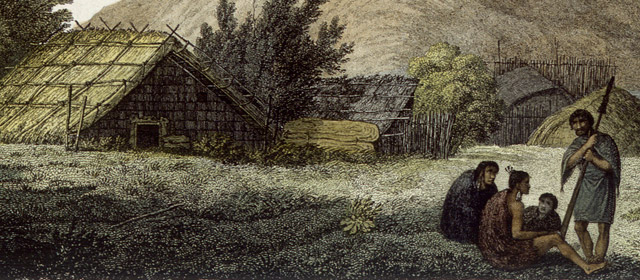Story summary
Traditional housing
Traditionally, Māori lived in family-based kāinga (villages) or pā. They slept in rectangular wharepuni (sleeping houses), which were made of timber, rushes, tree ferns and bark, with a thatched roof and earth floors. Other traditional buildings included pātaka (storehouses), kāuta (cooking houses) and wharenui (meeting houses).
European influences
European settlers introduced European-style housing to New Zealand. Some Māori built European-style houses, though most continued to live in traditional dwellings. However, some features of European houses, such as higher roofs and glass windows, began to be used in Māori houses.
Whare and health
From the late 1800s there was concern that disease was spreading in kāinga due to poor-quality drinking water, lack of sewerage and overcrowded and inadequate housing. Inspectors were appointed and houses were demolished and European-style houses were built, some through government housing schemes.
Moving to towns
After the First World War Māori began to move from rural areas to the cities. Even more, especially the young, moved after the Second World War. They often had difficulty renting good-quality housing as few Pākehā landlords were willing to have Māori tenants. To help with this problem, hostels were set up for young Māori men and women.
A separate pool of state houses was set up for Māori in 1944. However, they were not designed for a Māori way of living. For example, they could not fit an extended family. The home-ownership rate for Māori was much less than for the rest of the population due to factors including lower income, higher unemployment and larger families.
New housing schemes
In the late 20th century new schemes were introduced to increase the rate of home ownership among Māori, and many projects included Māori themselves. Some involved allowing Māori to borrow money to build on multiple-title land. (It is common for Māori land to have multiple owners.) Others involved partnerships between Māori trusts and the government.





